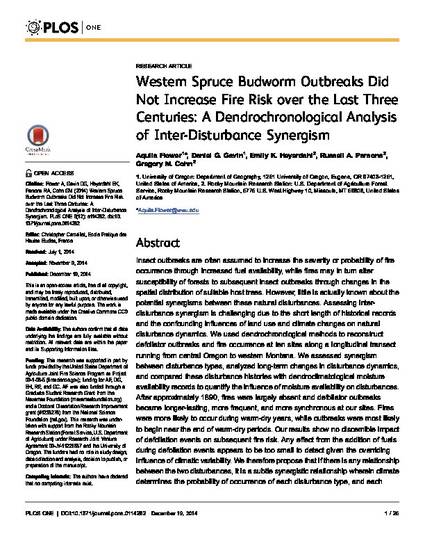
- Insect outbreaks,
- Spatial patterns
Insect outbreaks are often assumed to increase the severity or probability of fire occurrence through increased fuel availability, while fires may in turn alter susceptibility of forests to subsequent insect outbreaks through changes in the spatial distribution of suitable host trees. However, little is actually known about the potential synergisms between these natural disturbances. Assessing interdisturbance synergism is challenging due to the short length of historical records and the confounding influences of land use and climate changes on natural disturbance dynamics. We used dendrochronological methods to reconstruct defoliator outbreaks and fire occurrence at ten sites along a longitudinal transect running from central Oregon to western Montana. We assessed synergism between disturbance types, analyzed long-term changes in disturbance dynamics, and compared these disturbance histories with dendroclimatological moisture availability records to quantify the influence of moisture availability on disturbances. After approximately 1890, fires were largely absent and defoliator outbreaks became longer-lasting, more frequent, and more synchronous at our sites. Fires were more likely to occur during warm-dry years, while outbreaks were most likely to begin near the end of warm-dry periods. Our results show no discernible impact of defoliation events on subsequent fire risk. Any effect from the addition of fuels during defoliation events appears to be too small to detect given the overriding influence of climatic variability. We therefore propose that if there is any relationship between the two disturbances, it is a subtle synergistic relationship wherein climate determines the probability of occurrence of each disturbance type, and each disturbance type damps the severity, but does not alter the probability of occurrence, of the other disturbance type over long time scales. Although both disturbance types may increase in frequency or extent in response to future warming, our records show no precedent that western spruce budworm outbreaks will increase future fire risk.
Available at: http://works.bepress.com/aquila-flower/6/
